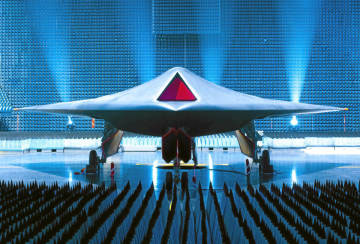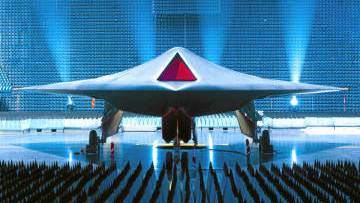Taranis Drone - Artificial Intelligence to take over the Skies
Source: theglobeandmail.com
The British military has unveiled a new unmanned attack aircraft designed to use artificial intelligence to fly itself halfway around the world and select enemy targets on its own, highlighting fears that such military automation will one day lead to weapons that decide when to shoot as well.
The Taranis prototype, a stealthy jet-powered autonomous flying robot weapon system, is billed by the British government and defence contractor BAE Systems as the first of its kind.
Unlike most other unmanned aerial vehicles, which are controlled by humans on the ground and fly in a limited area in support of ground troops, Taranis could be programmed to fly itself between continents to reach enemy territory.
“It could then carry out intelligence, surveillance and reconnaissance activity. … It's a combat aircraft with weapons so it could strike with precision weapons,” said Squadron Leader Bruno Wood, the Ministry of Defence spokesman for the Taranis project.
He added that humans would “absolutely” be in control of deciding when to fire any weapons system. “That's something you would never erase the human element from.”
The automation of weapons systems is a growing military trend, with the U.S. Army aiming to automate 30 per cent of its ground vehicles by 2015.
Militaries are spending large amounts of money to develop robots that can locate targets and “destroy them without human intervention,” says Noel Sharkey, professor of artificial intelligence and robotics at the University of Sheffield, raising the prospect of a scenario similar to that portrayed in the Terminator series of movies, in which robots are self-aware enough to start killing humans.
“The ethical problem is that no autonomous robots or artificial intelligence systems have the necessary skills to discriminate between combatants and innocents,” Prof. Sharkey wrote in an article on autonomous robot weapons in 2008.
In any event, the prospect of aerial vehicles deciding on their own when to shoot at a target is at least a decade off, said Elizabeth Quintana, an expert on unmanned aerial vehicles at the Royal United Services Institute, a think tank. She suggested that the Taranis project could be a way to reduce military budgets. “If you can eliminate two or three people, then it helps in terms of costs,” she said.
Named after the Celtic god of thunder, the Taranis concept plane took four years to build at a cost of £143-million. It's shaped like a V and has an air intake for its jet engine where the pilot would normally sit. Its stealth technology will help it avoid detection on enemy radars and its two internal bomb bays will allow it to carry a range of weapons.
Its maiden flight is expected to take place in 2011.
Squadron Leader Wood said that Taranis may not go into production, but it will be used to test technology that would be used by future unmanned combat air vehicles with the same capabilities.
Source: theglobeandmail.com
A.I. Taranis Drone

Cylon Raider from Battlestar Galactica


Cylon Raider from Battlestar Galactica

See more: Cylon Raider
Machine rebellion begins: Killer robot destroyed by US jet
If an autonomous machine kills someone, who is responsible?
Red Ice Radio
Kevin Warwick - Artificial Intelligence & The Rise of the Machines in 2020
Jim Gardner - The Intelligent Universe, Bio-Cosm, ET, AI and Evolution






















